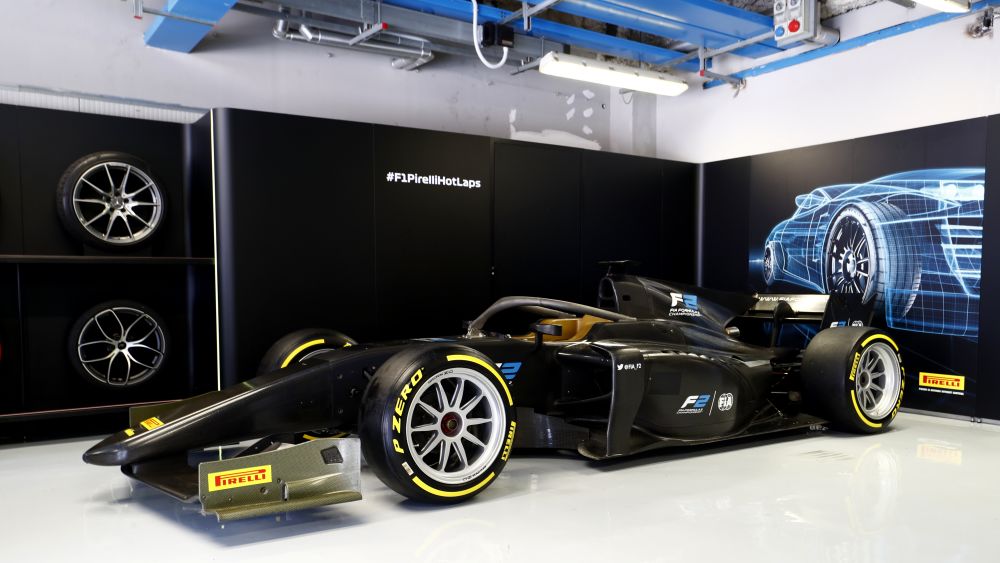Feature
What can we expect from the 18-inch tyres?

Formula 2 will enter into a new era when action returns at Spielberg in July, as the 18-inch Pirelli tyres get their first racing runout around the Red Bull Ring.
Technical Director Didier Perrin is the man behind these changes, leading the development of the car, and he took us inside the garage for a more detailed look at exactly what we can expect in Austria.
Fresh challenges
“Any change to the car is exciting, because it reshuffles everything,” Perrin explains. “It is down to the engineers and each of the teams to invent new setups and to adapt. Any change is good, and this one is a pretty big change.”

It certainly is. In order to accommodate the new rims, Perrin and his team have had to think outside the box and come up with a series of solutions in order to ensure that there isn’t any drop in performance. They’ve since made a multitude of modifications which have resulted in what is effectively a brand-new car, with entirely different characteristics.
One of the biggest challenges they were faced with was the addition of around 30kg in weight. One of the ways they looked to combat this was to make adjustments to the aerodynamics of the car.
One of the biggest challenges of the project was to make the required changes within a reasonable budget.
Perrin discussed the changes made: “As always cost control remains a key aspect of this Championship, so one of the biggest challenges of the project was to make the required changes within a reasonable budget, so that we could provide the teams with the cheapest possible upgrade kit.
“With that in mind, we looked to retrieve some performance by adding more downforce. Instead of completely changing the underfloors or the wings, which would have been too expensive, we simply added a floor extension to create the downforce we needed. We also changed, at almost no cost, the mapping of the engine to get 20 more horsepower, so it will not be limited to the dimension of the rim.
“These are big changes and it is something that’s really new, so it will be very exciting to see how the teams manage that.”
Scrupulous testing
Heading into Bahrain, Perrin and his team had kept their cards close to their chest, with question marks remaining over the exact level of performance we could expect from the cars.
The Frenchman was very pleased with the work that had been done and was confident in the changes, but until the teams actually set foot out onto the track, it wasn’t known exactly how high the performance would be.
It’s safe to say he even he was pleasantly surprised with the results. The top speeds measured across the three-day stint were on par - and at times better - than the speeds of the F2 cars at Bahrain in 2019, with the cars hitting around 295kph.
“We knew that we had done everything we needed to retrieve the level of performance from last year, but in Bahrain we discovered that we will probably have slightly more performance in 2020, than we had in 2019, which is always good. It wasn’t much more, but they were slightly faster than we were expecting.
“The level of programme and the level of downforce are different from last year, so overall the car will be maybe slightly faster than last year, but it will be depending on the track. I think that high speed tracks should see the best performance increase.”
Rookie drivers could benefit

With a host of exciting rookie talent joining the grid for the 2020 season, there has been talk of a potential levelling of the field. With what is effectively a brand-new car to learn, prior experience in the Championship may mean less, and give the new crop a greater opportunity at success.
On this, Perrin concluded: “It is a good thing for newcomers, because obviously the older drivers, the more experienced drivers, drove a car which was very different from the 2020 car. Having said that, F2 is very challenging and it is always difficult for rookies.”
Final preparations
Due to the Covid-19 pandemic and the subsequent period of lockdown, work on the F2 development car was brought to a halt for three-months. Since recommencing work, the development car has been running twice a day in order to ensure everything will be ready for the first session in Austria.
Anticipation is rife for the official racing debut of the car and it is now down to the teams and their drivers to work out how to get the most out of the new machines.